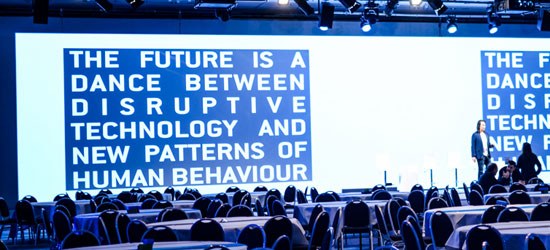I’ve just returned from Mobile World Congress, and one of the most interesting things I noticed was that Oral-B was at the show. The show has definitely become far more than a mobile and wireless show, but I was still surprised to see a toothbrush company. Like the monkey in the Curious George books I read to my kids, I wandered into their booth to discover that some of their newer electric toothbrushes actually have Bluetooth and connect to a mobile phone app to help you improve your brushing. As if thermostats and garage door openers were not enough, here is the ultimate example of software touching every part of our lives.
Marc Andreessen, one of the most prominent Silicon Valley investors and a founding father of the Internet browser, made this exact observation in his profound August 2011 Wall Street Journal Essay, “Why Software is Eating the World.”
Andreessen reasons that with the emerging maturity of key technologies and pervasive access to capital, software has already disrupted many industries and many more will follow. Since the article was published, there are new, high-profile examples where software is even eating the service industry—from Uber and Lyft disrupting taxis to airbnb and HomeAway disrupting hotels. In case you are wondering, Lyft and airbnb are both Andreesen Horowitz portfolio companies.
Since 2011, software has also been eating technical support at Dell. Inspired by our Compellent acquisition, we started a journey to turn a people-and-parts business into a software business. It’s not immediately obvious how a technical support call center with rows of cubicles and agents on headsets becomes a software business, but that’s exactly what we showcased in Barcelona.
On February 10,, 2015, software began snacking on support for PCs and tablets. With our launch of ProSupport Plus for PCs and tablets enabled by SupportAssist, Dell is the first and only in the industry to offer proactive and predictive automated support.
Dell’s SupportAssist technology monitors PCs and tablets and when an issue is detected, the software sends diagnostic data back to Dell so we can call or email our customers to quickly resolve the issue. Beyond monitoring for failures, the software is smart enough to predict failures on certain components like the hard drive. This allows us to call customers to warn them in advance of a failed drive so they have time to back up their files and avoid any data loss. If you’ve ever lost a hard drive, you certainly understand the pain of trying to recover data or giving up hope that you will be able to retrieve it. With our new ProSupport Plus service with SupportAssist technology, software is eating Dell support. To see how we proactively support customers in 66 countries and 19 languages, check out this video, and read how analyst Patrick Moorhead of Moor Insights explains how we are using IoT and Big Data to reshape support in this white paper.
There is more excitement to come, but for now we are thrilled to be the first and only to offer support that reduces time on the phone with tech support by 84% when compared to our competitors.[2] And, based on what we heard in Barcelona, the market thinks so too!
If you’re heading to Dell World in Austin this October, I’d love to hear what you are doing with all that ProSupport Plus saves you. If you are on Twitter, please follow me (@jimroth) and @DellProSupport.
